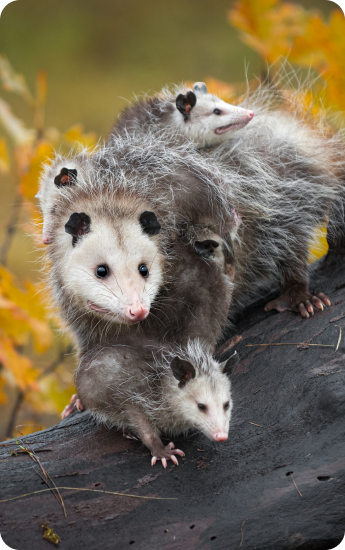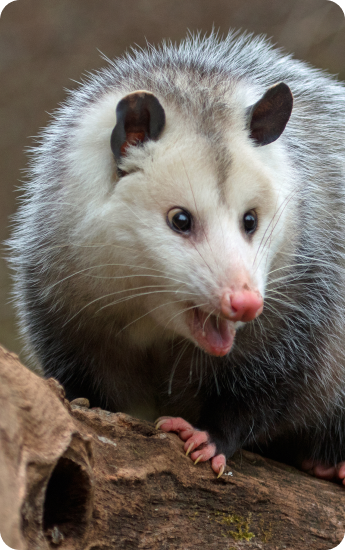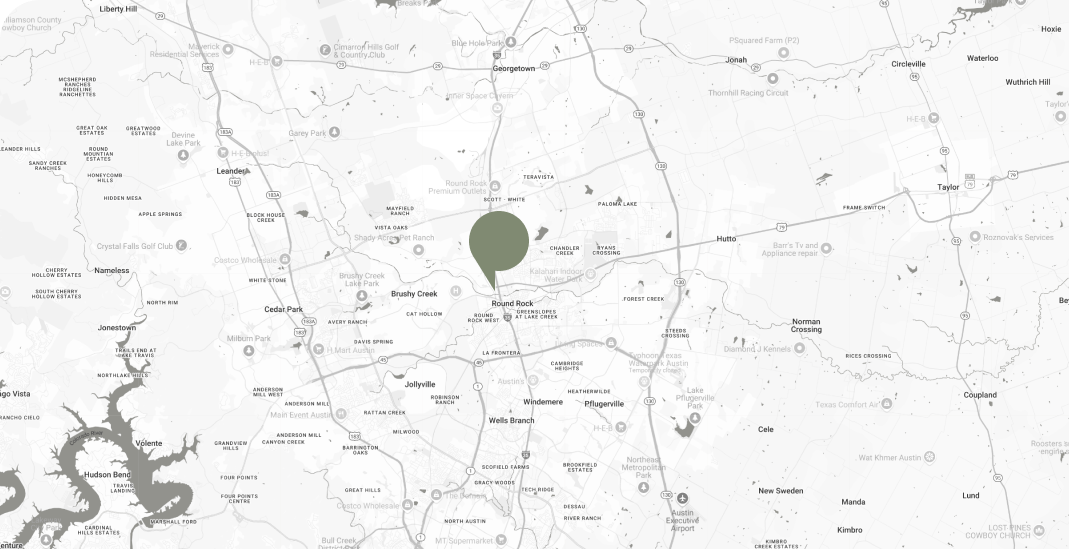Opossums
Biology & Habits
Opossum are nocturnal and uses its keen sense of smell to locate food. It is omnivorous and will consume just about anything that edible, including dead animals. Once a female opossum mates, she gives birth 13 days later to a litter of roughly a dozen baby opossums that are no bigger than a honeybee. These tiny, blind and hairless babies must crawl, on their own, all the way to their mother’s pouch. There they each latch on to a teat and nurse for almost three months. Once the young opossums leave the pouch, they’re still not ready to face the world on their own. For the next 10 to 15 days they go about clinging to mother’s fur. Eventually, they become too heavy to hang on during these trips and one by one fall off. By this time, the young opossum is fully weaned and able to forage for themselves. Opossums are exceptionally non-aggressive and non-destructive.
Opossums
Physical Abilities
The opossum with a top running speed of only 7 miles per hour is well equipped to escape enemies. They readily enter burrows and are excellent climber, using opposable hallux ( thumb like),on its rear feet, to help grasp branches when climbing.
When confronted, they will sometimes display their 50 sharp teeth and may hiss. Rather than fight when cornered, the opossum will slip into an involuntary state of apparent death, this is where the term ‘playing possum’ evolved .This state of catatonia can last a minute or two or even as long as 2 hours before the ‘dead’ opossum revives and moves on.



